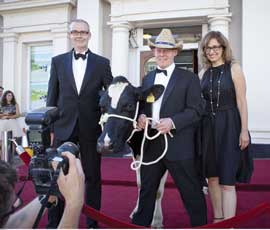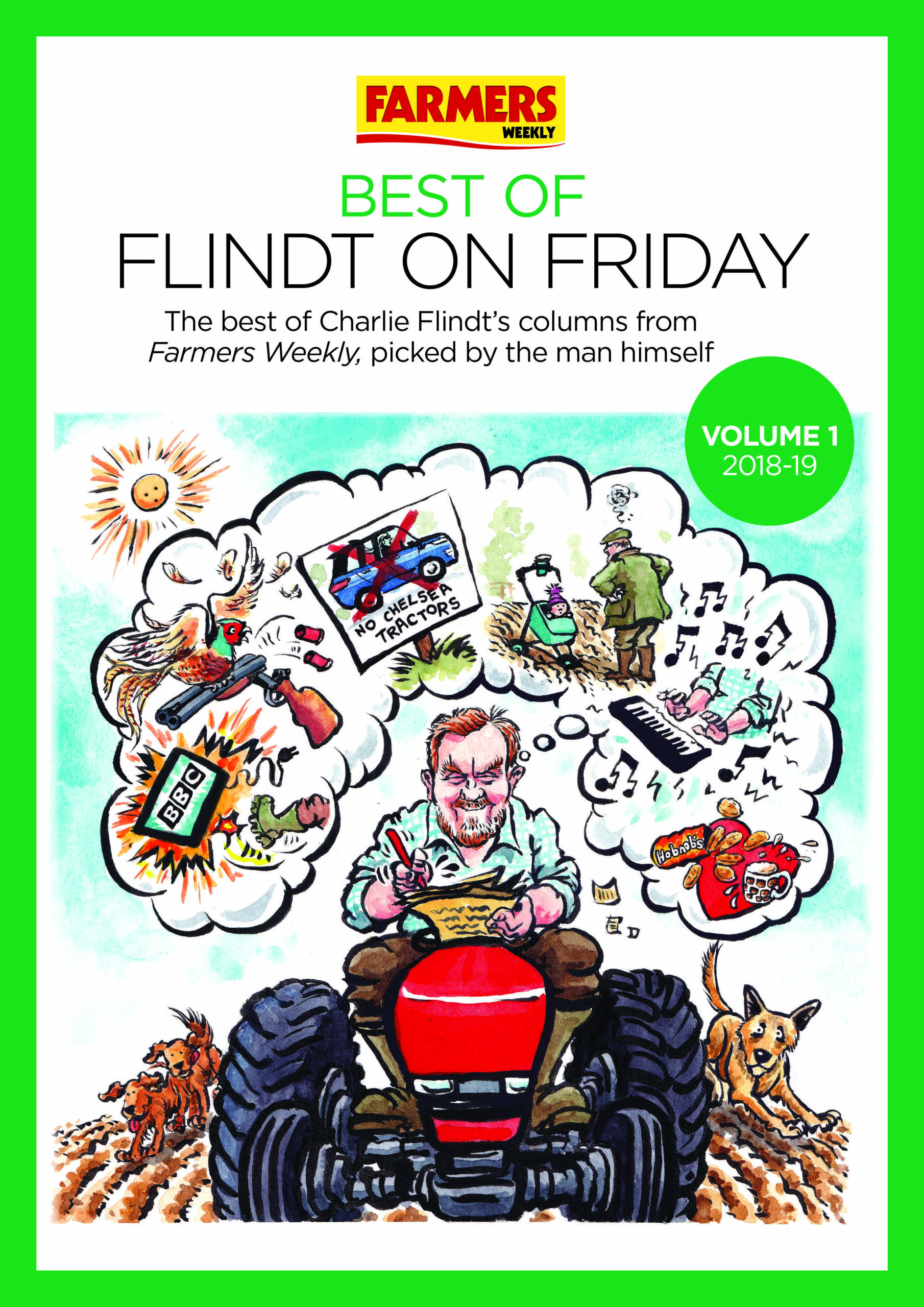The Moo Man movie reviewed

A feature-length film starring a Sussex dairy farmer and his herd of 55 dairy cows hit cinema screens this week.
A local cinema in Hailsham rolled out the red carpet for the gala premiere of The Moo Man – an observational documentary about Steve Hook’s organic dairy farm on the marshes of the Pevensey Levels. There are a further 40 screenings scheduled at cinemas and venues across the country over the summer.
The Moo Man was filmed over four years by independent filmmakers Andy Heathcote and Heike Bachelier (pictured above either side of Steve Hook and Ida at the film’s premiere) who wanted to document Steve’s close relationship with his herd and his attempts to build a raw milk delivery business to mitigate poor milk prices.
The seeds of the project were sown when the pair received a leaflet through their letterbox advertising Steve’s raw milk deliveries. After visiting his farm they felt they had to tell his story.
Steve admits that before the project started he “knew nothing about filming”, but he had good reason to open his gates to the cameras.
“There’d been a period of undercover filming exposing bad practices on large farms and the public really had a bad impression of dairy farms,” he said.
“We have nothing to hide. We take every opportunity we get to welcome people onto the farm so the film is really an extension of that.”
Click here to find your nearest screening.
Farmers Weekly deputy farmlife editor Rachel Jones attended one of the first screenings. Read her review of the film in the box.
Review of The Moo Man, by Rachel Jones
Most movies come with a pre-roll message warning viewers about strong language, violence or nudity, but this was the first time I’ve settled down to watch a film that starts with the words “Contains scenes of animal birth.”
It certainly delivered on its promise. In one scene – like a bovine version of One Born Every Minute – Steve Hook gently coaxes a heavily pregnant heifer to push out a reluctant calf. “I’ll pull, you push,” he urges her, as he ties ropes around the emerging calf’s feet and starts to pull.
The gritty, messy, reality of farm life (slimy newborn calves hitting the ground with an unceremonious thud, rivers of slurry, mud, blood, death and general exhaustion) is tempered by Steve’s overwhelming sensitivity, care and attention to his herd, which pervades the film from start to finish.
Steve wins over the audience early on with his gentle manner, but when he tends to a sick cow in the closing stages of the film, they’re putty in his hands. He has a better “bedside” manner with his cows than some nurses have with their patients.
That said, it’s difficult to say who is the true star of the show – farmer Steve or “queen of the herd” Ida – a limelight-loving cow.
“I had no idea cows had so much character!” said one audience member at the end of the screening, which is where the true delight of the film lies. I defy anyone not to laugh during the scene where Steve transports Ida to the seaside town of Eastbourne for a promotional photo shoot for his raw milk business. Ida’s stubborn determination to avoid returning to the trailer had the audience in stitches. In fact the cows provide all the film’s laugh-out-loud moments, mainly when they do the precise opposite of what Steve and his farmworkers want him to do (familiar territory for any livestock farmer).
Given that the film follows a small, family-run, organic dairy farm, it would be very easy to stray into twee territory, but the film manages to squeeze a surprising number of weighty issues into its 98-minutes running time. TB tests, the badger cull, milk prices and supermarket domination are all acknowledged, which leaves the audience in no doubt that despite the beautiful backdrops, tender moments and comedic cows, dairy farmers still have it very hard indeed.

